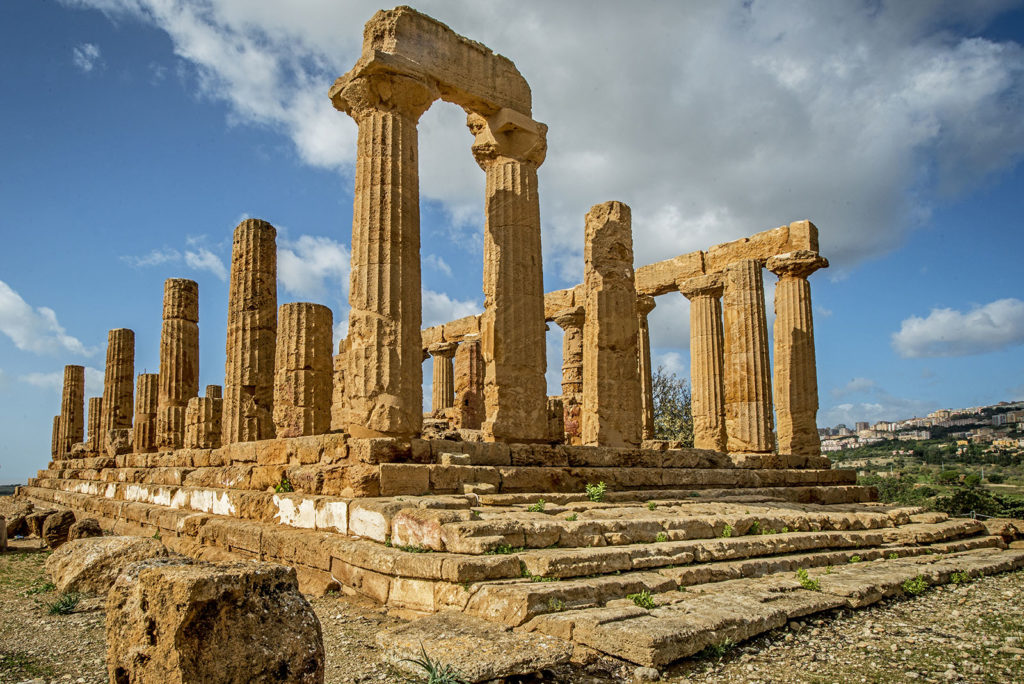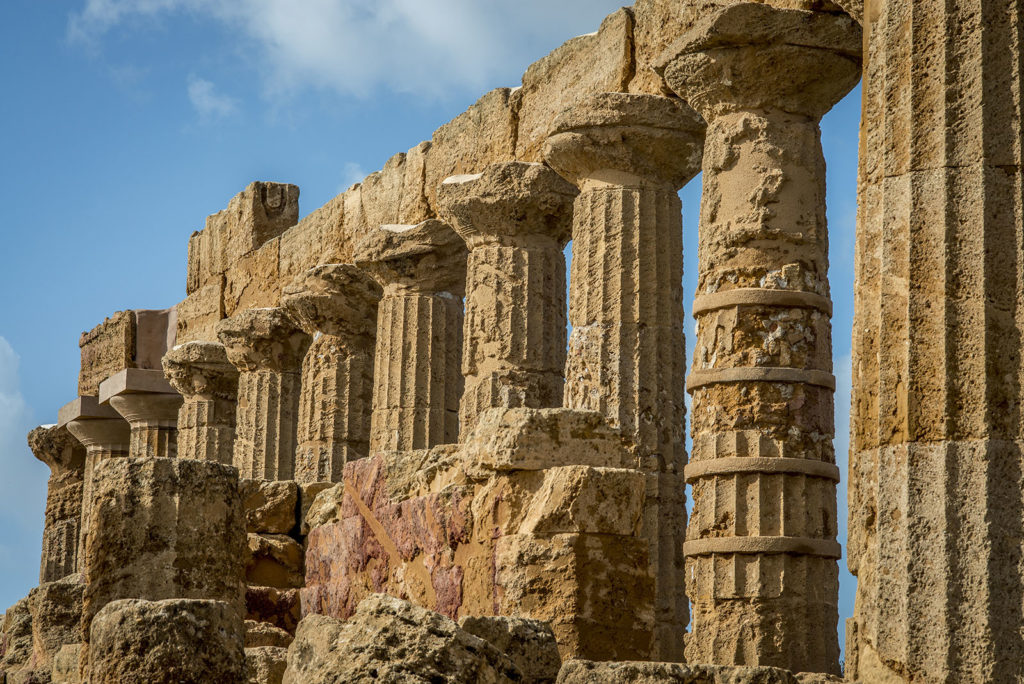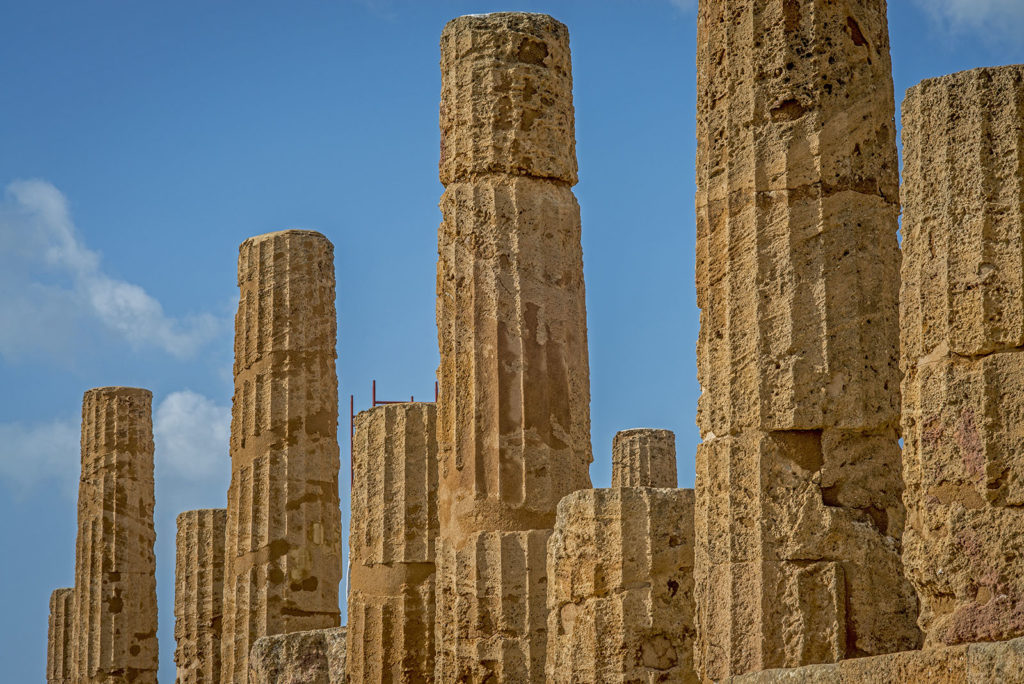At the south-east end of ancient Akragas, on the highest rocky spur of the hill of the temples stood the majestic Temple of Hera Lacinia with its east-facing façade. Unfortunately, the temple’s traditional name is
wrong
Unfortunately, the temple’s traditional name is
wrong
and some archaeological finds in the area suggest that the structure was actually devoted to
Poseidon
.
The temple is of Doric order and dates back to around 450-440 BC.
The structure has an imposing
basament
of four steps on which six columns rest on the short sides and thirteen on the long ones: this layout, typical of Greek temples of the classic Doric age, made buildings appear harmonious and balanced in shape, despite their colossal size. The basement of the temple measured around 38 by 17 metres, and the columns soared upwards over 6 metres tall! Of the thirty-four still standing, as many as sixteen columns still have their capital.
Those on the north side also support the architrave with part of the decorative frieze. On the east side of the structure, around fifteen metres from the entrance there are ten steps leading to the altar where sacrifices to the gods took place. The southern side, on the other hand, is the most damaged: over time, the sea air has acted on the soft
limestone
On the east side of the structure, around fifteen metres from the entrance there are ten steps leading to the altar where sacrifices to the gods took place. The southern side, on the other hand, is the most damaged: over time, the sea air has acted on the soft
limestone
and made it more vulnerable.
 The inside walls of the cella (shrine) still show signs of the terrible fire that destroyed the temple in 406 BC, during the Carthaginian conquest of the city.
The inside walls of the cella (shrine) still show signs of the terrible fire that destroyed the temple in 406 BC, during the Carthaginian conquest of the city.